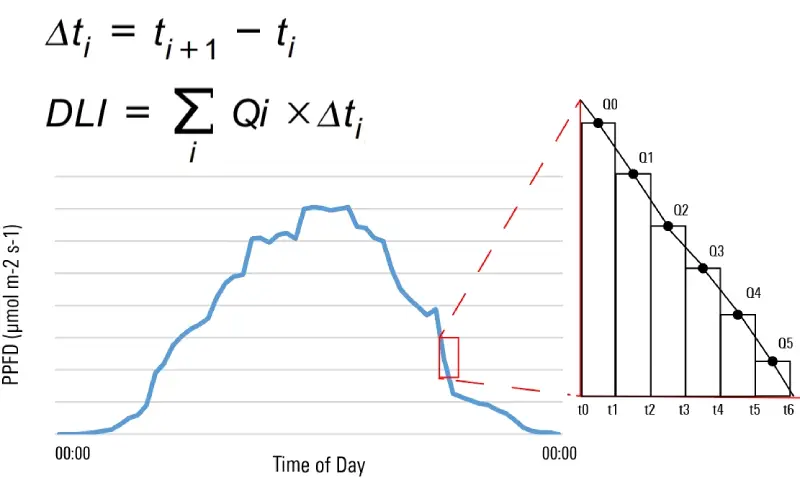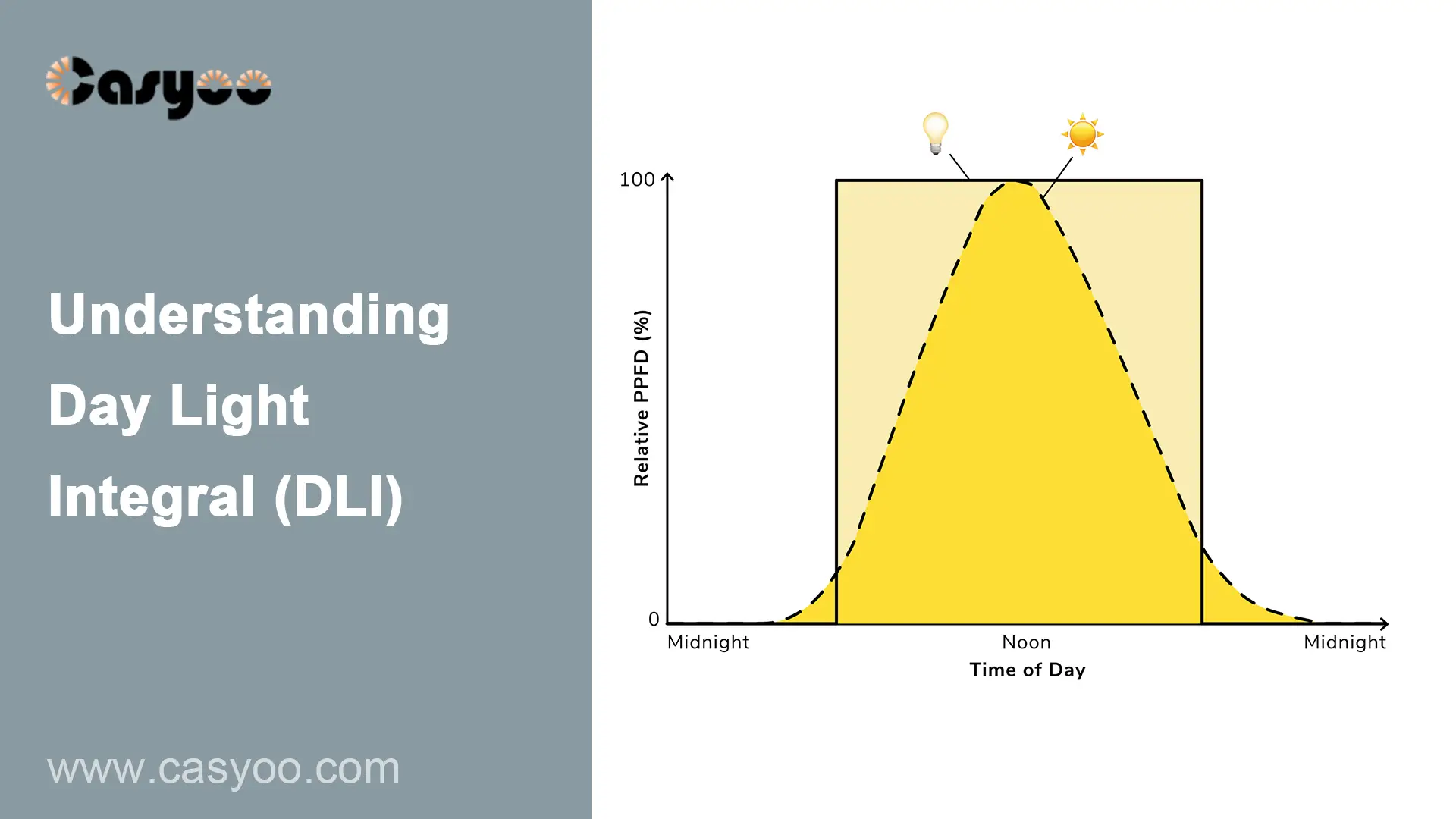What Is DLI?
DLI measures the total daily light input received by a plant. Though scientists would likely argue that DLI is a cumulative assessment of the total number of photons that reach the plants and algae during the day photoperiod, the grower can think of DLI as the plant’s daily “dose” of light. The unit of measurement used by DLI is “moles” per square meter per day (mol/m2/d).
Why Is it Important to Understand it?
Like us, plants require a few fundamental necessities to survive. Many gardeners already know how to cultivate and tend to their plants, from nutrient-rich soil and water to sunlight. Growers strike a balance between giving your plants enough water and preventing them from drying up. Similarly, you cannot leave a light on 24/7 since it would burn the leaves and cause them to dry out. On the other hand, your plant won’t grow if you leave it in the dark all day. This is where DLI comes in place. If you know how much DLI your plants require, your plants will grow to their potential. Different plant has various requirements for DLI in their growth phase. By knowing these needs, you can adjust lighting to maximize growth and yields.
How Is DLI Measured?

We now know that DLI is measured by figuring out how much PAR is delivered to a certain region in 24 hours. Here are the units used and the method of measurement:
Assessing the Light Intensity
Micromoles per square meter per second (µmol/m2/s) is the unit of measurement for the light intensity. The term “photosynthetic photon flux density” (PPFD) refers to this measurement.
Calculating DLI
Here is the formula to calculate DLI:
DLI = (PPFD)(Photoperiod)(3600) / 1,000,000
Units:
- PPFD=mol m-2 s-1
- Photoperiod=h
- DLI=mol m-2 d-1
Multiply the PPFD by the number of seconds in the photoperiod. Then, divide the result by 1,000,000 to convert micromoles to moles for the DLI calculation.
What Factors Influence DLI?
Here are some factors that could affect DLI:
- Light source: DLI may be significantly impacted by the type of light source that is employed. The amount of light that reaches plants that are actively photosynthetic can vary depending on the type of light source and its emission spectrum.
- Light duration: A longer photoperiod can raise the DLI because plants need a specific amount of light every day to meet their energy requirements and grow to their full potential.
- Light quality: Plants absorb light at varying rates depending on its wavelength, and their growth can be influenced by different spectra.
- Distance from light source: Plants that are farther away from the light fixture will gain less light and have a lower DLI because the light intensity reduces as it moves farther from the light source.
- Plant canopy density: Plants with dense canopies or tight spacing may shade one another, limiting the amount of light reaching lower leaves and lowering the DLI overall.
- Environmental conditions: DLI can also be impacted by environmental variables such as humidity, temperature, and CO2 levels. High temperatures have the potential to accelerate photosynthesis and raise the DLI; conversely, low CO2 or high humidity can have the opposite effect.
Understanding these factors and keeping an eye on your plants’ DLI will help you optimize your growing conditions and encourage strong, healthy growth.




